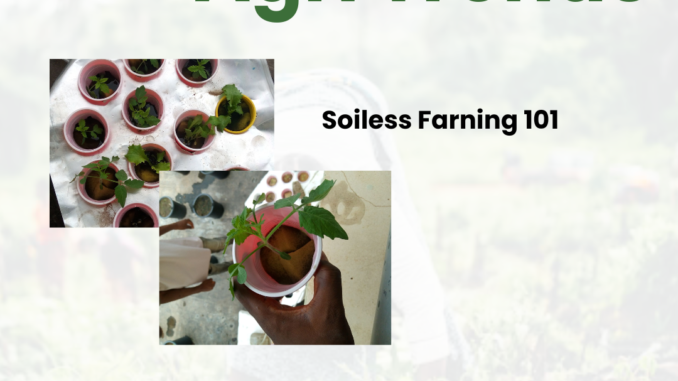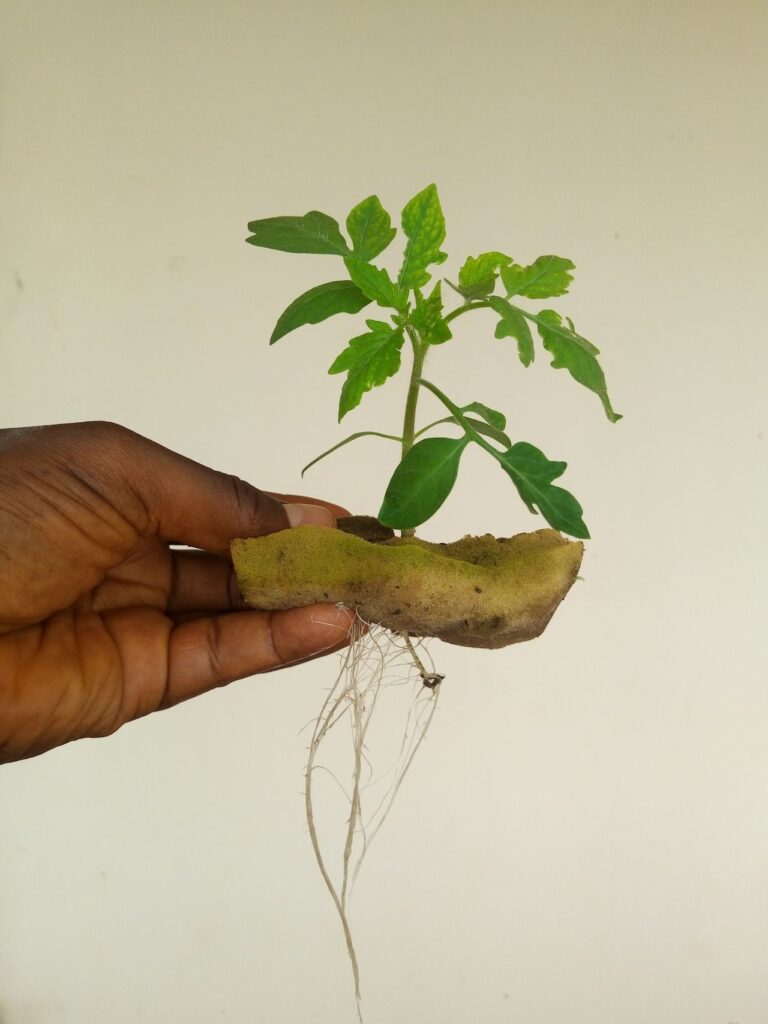
In a world where we really need smart ways to grow our food, soilless farming is taking center stage! Imagine growing plants without dirt - sounds cool, right? As we run out of space and resources, this exciting method is changing how we think about gardening. It’s a fun, innovative way to grow plants and stay connected with nature, all while making the most out of every little space.
Let’s dig in and explore this new way of growing and their benefits!
What is Soilless Farming?
Soilless Farming possesses a potential method of growing plants without the use of soil, in which the nutrients required for growth are supplied through other means. This approach has significant advantages, particularly in urban environments and limited spaces, where soil can be a precious resource.
By eliminating dependence on soil, soilless farming optimizes space, allowing greater crop density in smaller areas. It also reduces water requirements by delivering nutrients directly to plant roots, minimizing wastages and evaporation. This technique not only converses valuable resources, but also offers greater efficiency in the use of nutrients, resulting in faster, healthier plant growth.
So, whether you\'re a farmer in the city or a gardening enthusiast looking to make the most of your little patch of green, soilless farming is the fun, innovative way to nourish our planet while embracing urban life!

There are different methods of Soilless Farming which are:
Hydroponics:
Hydroponics is one of the oldest soilless farming techniques. It is a method of growing plants by using mineral nutrient solutions in a water solvent instead of soil. With this method, plants take all vitamins and minerals they need from the nutrient solutions. Thus, plants which are grown by this method are as nutritious as the plants which are grown with soil.
Aeroponics:
This is also a method of growing plants without soil. However, in aeroponics, plants are grown by using a mist filled with essential nutrients which are regularly sprayed on the roots of the plants. This system is 100% safe and important to sustainability by decreasing water usage significantly.
Aquaponics:
Aquaponics is another common soilless farming method. This is a combination of aquaculture (raising aquatic animals such as fish, crayfish, snails, or prawns in tanks) and hydroponics. The nutrients rich water from the fish tank provides a natural fertilizer for plants, and plants help the clean water for the fish.
Equipment used in Soilless Farming:
- Growing Media
Hydroponic Systems:
- Coco Coir: A natural fiber derived from coconut husks, known for its water retention and aeration properties.
- Perlite: A volcanic glass that is lightweight and provides good aeration and drainage.
- Vermiculite: A mineral that expands when heated, used to improve aeration and water retention.
- Rockwool: An inorganic material used for its structure and inability to hold water and nutrients.
Aeroponic Systems:
- None: Plants are grown with their roots suspended in the air and sprayed with nutrient solution.
- Nutrient Solutions:
- Nutrient rich water: Soilless farming relies on delivering essential nutrients directly to the plant roots through a carefully formulated water based solution.
- Pumps and Tubing: Used to circulate and deliver the nutrient solution to the plants.
- Lightening:
- LED Grow Lights: Provide supplemental lightning to ensure plants receive the necessary light for growth, especially in indoor or greenhouse environments.
- Full Spectrum LED Grow Lights: These lights mimic natural sunlight and are particularly effective in soilless media.
- Containers and Trays:
- Pots, Containers, Pipes,and Trays: Used to hold the growing media and plants.
- Grow Bags: Versatile and space saving containers for soilless farming.
- Automation and Control Systems:
- Pumps: Used to circulate water and nutrient solutions.
- Air Pumps and Air Stones: Used in aeroponics to aerate the nutrient solution and prevent anaerobic bacterial growth
- Sensors and Controllers: Monitor and regulate parameters like pH, temperature, and nutrient levels.
BENEFITS OF SOILLESS FARMING
- Resources Efficiency:
- Water Conservation: Soilless systems allow for precise water delivery and nutrient solutions, reducing water waste compared to traditional irrigation methods.
- Nutrient Optimization: Plants can access nutrients directly through the nutrient solution, leading to efficient nutrient uptake and reduced waste.
- Space Optimization: Soilless farming allows for greater crop density in smaller areas, making it ideal for urban agriculture and maximizing land use.
- Reduced Pesticide Use: Soilless systems can minimize the need for pesticides and herbicides, as they reduce the risk of soil borne diseases and pests.
- Enhanced Crop Production
- Higher Yields: Soilless farming can lead to increased crop yields due to optimized growth conditions, faster growth cycles, and the ability to control environmental factors.
- Improved Quality: Precise control over nutrients and water delivery can result in higher quality produce.
- Year Round Production: Soilless farming allows for year round crop production in controlled environments, regardless of weather conditions or seasonality.
- Environmental Benefits:
- Reduced Environmental Impact: Soilless farming can contribute to a more sustainable agricultural system by reducing water consumption, minimizing chemical inputs, and reducing land degradation.
- Sustainable practices: Soilless farming promotes sustainable practices by optimizing resource use and reducing environmental pollution.
- Mitigation of Climate Change: By reducing the need for pesticides and fertilizers,soilless farming can help mitigate the environmental impact of agriculture and contribute to climate change mitigation.
As the Nigeria population continues to grow and climate change poses further threats to food security, soilless farming stands as a viable solution for feeding future generations.
By investing in research and development, improving technology, and encouraging community engagement, we can harness the full potential of soilless systems. Ultimately, embracing these innovative agricultural practices can lead us toward a healthier, more sustainable food system that benefits both people and the planet.
Leave a Reply